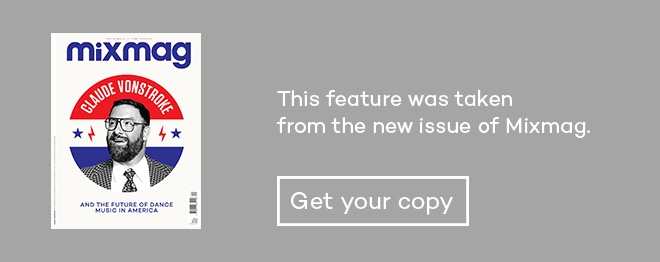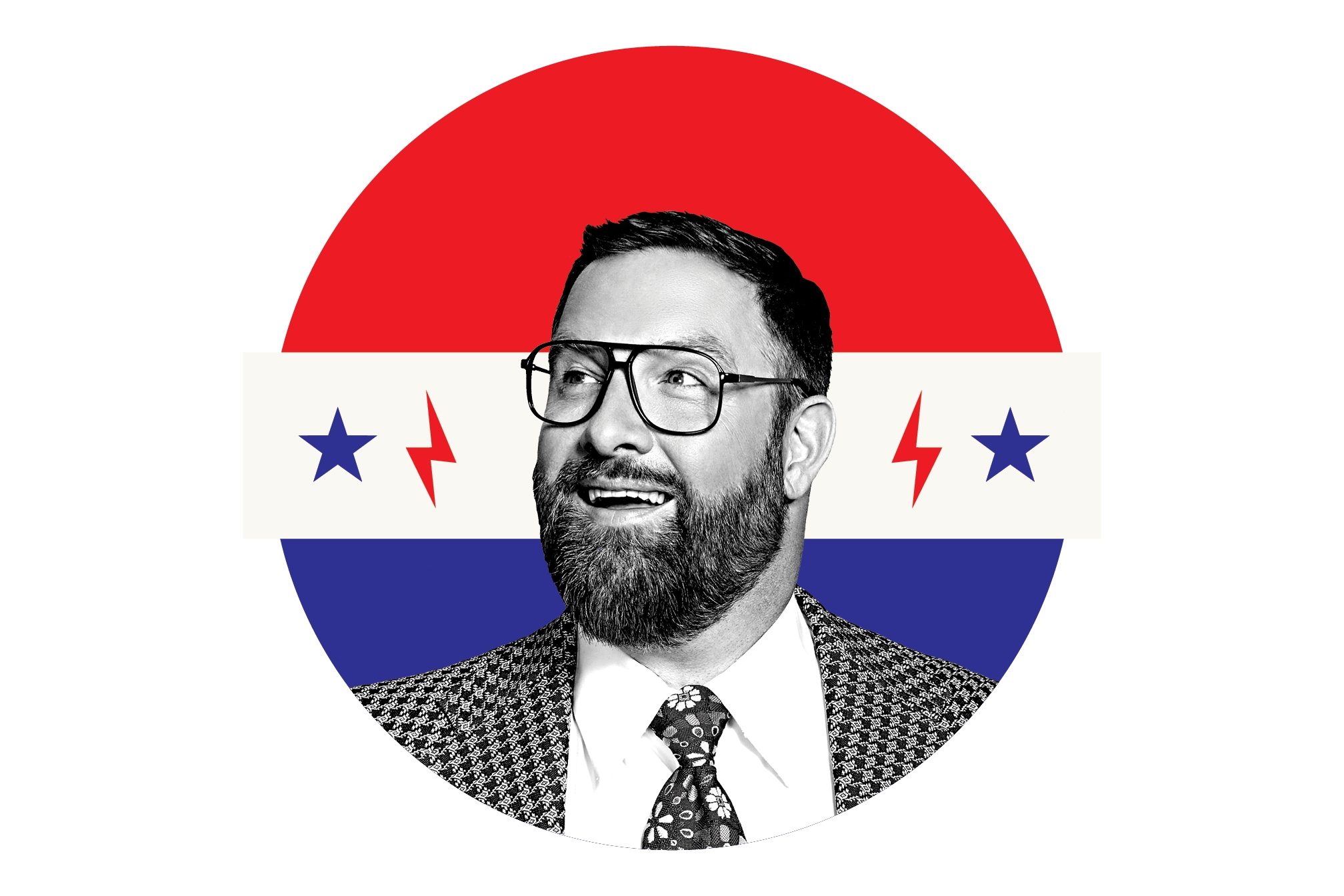 Cover stars
Cover stars
Claude VonStroke and the future of dance music in America
Welcome to the United States of VonStroke
The DJ and producer known as Claude VonStroke and his imprint Dirtybird have done more than anyone to plot a sustainable, credible course for dance music in the US after the EDM boom.
We joined him on the campaign trail from LA to Detroit.
Barclay Crenshaw looks refreshed. He won’t be for very long: tonight marks October’s halfway point, and he’s booked for the next four weeks solid. Yet the strain doesn’t show. In fact, he seems almost beatific.
Crenshaw, better known to fans as Claude VonStroke, maestro of tweaky yet friendly house music, and the head of Dirtybird Records – an umbrella that encompasses a record label, event promotion, and all manner of merchandise – has the sort of presence that instils immediate trust – or better yet, the promise of a good time. He’s a canny marketer to a sturdy and growing audience. Dirtybird now runs three US festivals every year, in the San Fran Bay Area, Florida, and Chicago, and plans are afoot for a December tour by Crenshaw and Curtis Jones, aka. Green Velvet, who play and produce back-to-back as Get Real.
The two met while disembarking from a plane in Australia, recognising one another across the room, and when they met again in Miami during Winter Music Conference, where they were accidentally scheduled simultaneously, they decided to play together for sport. “We played a four-and-a-half hour, five-hour thing, and it was so easy,” says Crenshaw. “And I hate back-to-back – I didn’t get into this to try and figure out how someone else works! But it was like ESP. We definitely had to get told to get off [the decks].” The two held a spontaneous meeting while in Vegas at the VIP table of a hip hop club. “There was champagne,” says Crenshaw with a laugh. “It was pretty stupid.”
Barclay Crenshaw was born in 1971 in Cleveland Heights, Ohio, in the heart of the industrial Midwest, before moving to Detroit when he was 12. They lived in Grosse Point, which he describes as “dead in the middle of the ‘Preppie Handbook’ era. Everyone’s popping collars, penny loafers. I’m like, ‘Oh, my god, this is the worst’. It took a while.”
By the age of 15, he and a beat-making friend had put together a tape of Crenshaw’s “rap songs about our local pizza place” made on a four-track, and looked in the Yellow Pages under ‘recording studios’. The biggest ad belonged to Metroplex, Juan Atkins’ label – the foundation of techno, literally. Crenshaw and his friend got on their bikes and pedalled a mile to East Detroit. “They were like, ‘The rap tape’s not that bad! But we don’t know what to do with you guys. We’re going to play you what we’re making’.” They put on Atkins’ classic Model 500 track ‘Technicolour’. Crenshaw didn’t know what to make of it yet.

After college in Rochester, New York, Crenshaw landed in Hollywood. His first job was an unpaid internship for the “totally insane” director Lee Daniels. “I had all of the Ari Gold jobs you could imagine,” he says. One of them, in 1997, was assisting Michael Caton-Jones, director of the Bruce Willis crime drama The Jackal (1997), with an electronic-heavy score. “That’s the first time I heard LTJ Bukem,” Crenshaw says; it pushed him from making Chemical Brothers-style big beat to producing drum ’n’ bass. But he was burning out on film work. “It was brutal – everyone screaming at you for eighteen hours a day,” he says. Caton-Jones saw his future more clearly than he did, signing his assistant’s Jackal poster: “Good luck with your music career.”
Returning to Detroit, he discovered that local car commercials paid better than Hollywood studio films. He lived in a cheap, roomy loft above Niki’s Pizza, and his roommate began taking him to the parties thrown by his friends in the Poorboy crew. They eventually booked Crenshaw for his first-ever show – “a live jungle set with a Nord Modular in the D or E room of this illegal rave.” It wasn’t an exact fit: “Everyone was like, ‘Nobody makes jungle in Michigan,’ and they were right. I did spin it in some very small bars, and nobody cared.”
People cared in San Francisco – about jungle, but not Crenshaw. “That clique was indestructible,” he says. “I couldn’t get anywhere. Around the same time, that music got really evil, and I started noticing, ‘There’s no more girls here at all’.” Soon he befriended Justin and Christian Martin, bartender friends who both DJed. “They were going to parties where it was all girls. [The sound] was Naked Music, this whole West Coast house, silky smooth, vocals, and I hated it. But everyone was at those parties. So we just put some dirt into their West Coast house tracks.” He laughs: “We’d grind ’em up and take out all the vocals, and people were like, ‘This is the worst shit ever’.”
In 2003 Crenshaw began playing Sunday afternoons in Golden Gate Park along with the Martin brothers, Worthy (Sean Williams), and J Phlip (Jessica Rose Phillippe). “Christian was obsessed with [arts and music collective] Moontribe,” says Crenshaw. “They would go to any lengths just to have a party: on top of a mountain, six feet of mud. For me, the Packard Plant was as far as you’d go. You didn’t go out to the middle of the Mojave Desert with a generator and have your car break down and be stranded there for three days. I was like, ‘You guys, this is insanity’.”
In the middle of all this, Crenshaw met Aundy, who’d grown up in Minneapolis; they married in 2005. They were living in a house on Haight Street, but when daughter Ella arrived in 2008, a year after son Jasper, they relocated to the more isolated city of San Anselmo. “My wife was like, ‘I cannot believe that you are leaving this house on Sundays to do this party for free, driving all around the city’,” Crenshaw says. But she was, in fact, deeply supportive. “He was like a little project: ‘Maybe I can help him,’ ” she recalls.
“She’s the one who said, ‘I’ll pay the rent for one year. You do this, and if you can make this work, if you can make fifty grand, then you can do it forever. If you can’t hit that number, you have to get a job for the rest of your life,’ ” says Crenshaw. “That was the most motivating thing I’ve heard – ever.” He saved up enough to finance four 12”s. Dirtybird #3, Claude VonStroke’s ‘Deep Throat’, sold 14,000 vinyl copies. After waiting until he was 32 to make a record, he’d hit his target early.

Crenshaw and his family moved to Los Angeles five years ago, just as EDM fever was gripping the US. Today, EDM is an era that feels strangely distant, but Dirtybird is thriving. Its digital-subscription service, the Birdfeed, has a subscription base of 2,000. For $6.99 a month, hardcore fans get ticket discounts and lots of exclusive music – such as a recent cache of 50 unreleased goodies from the demo pile, handpicked by Crenshaw, who receives some 500 submissions a week. “The fans either just really like our music or are coming from something else: ‘I used to listen to Calvin Harris,’ or whatever,” he says. “They’re coming down off of EDM. I will also say – and it’s hard to believe – some of them are coming up off of super too-cool-for-school stuff. It’s the middle pathway.”
The Dirtybird sound, and that of Claude VonStroke as DJ, has of course shifted with the years, but at root it follows a specific template: clean-lined tech-house with layered, laser-like basslines, heavily filtered hi-hats, the occasional short catchphrase. As Crenshaw puts it, “Not everything has to be a drum sound. I use a lot of percussion that isn’t percussion. We’ll make a silly song, but the production is going to be amazing.” Though it can make trainspotter types tut-tut, that playfulness is key to Dirtybird’s populist appeal. Crenshaw and his mates aren’t shy about hooks, but they also doesn’t beat you over the head with them, caveman style – that sort of grossness is what EDM is (was) for. Which is another key difference: whatever its cool level, Dirtybird’s musical ethos is progressive and inclusive. “I feel a responsibility to the dancefloor,” he says. “I don’t want to make something that’s not going to be playable.”
For years, Dirtybird was essentially a one-person enterprise. More recently, Crenshaw has hired extra help – including his life partner. “I’ve always been advising him on the side about marketing and branding,” Aundy says. Finally, Crenshaw told her: “I really need you back on my team.” Today, says Crenshaw, “She’s the COO, CMO of Dirtybird running the operations of events, the label, the clothing. I get pulled in when needed for Claude VonStroke.” It’s a tricky balance, says Aundy. “On weekdays, after six in the evening, we have a rule where we can’t talk business,” she says. “It’s really hard. We call each other on it all the time.”
Still, it gets results. On October 5–7, the fourth annual Dirtybird Campout took place in Northern California – this time, at Modesto Reservoir – and it came off without a hitch. “They’re friendlier than I’d have ever expected,” Crenshaw says. “At the Campout, people get their wallets returned to lost and found. They look out for each other.”
And that extends to the performers. “Matthew Dear played the Campout last year and had a really great time,” says Ghostly’s Sam Valenti, who adds: “What Barclay’s done well is building a community. He’s threading the needle between a lot of different strands of dance music, but he still has a rough-and-ready energy that I would attribute back to his Detroit upbringing. It’s serious, but not too precious.”
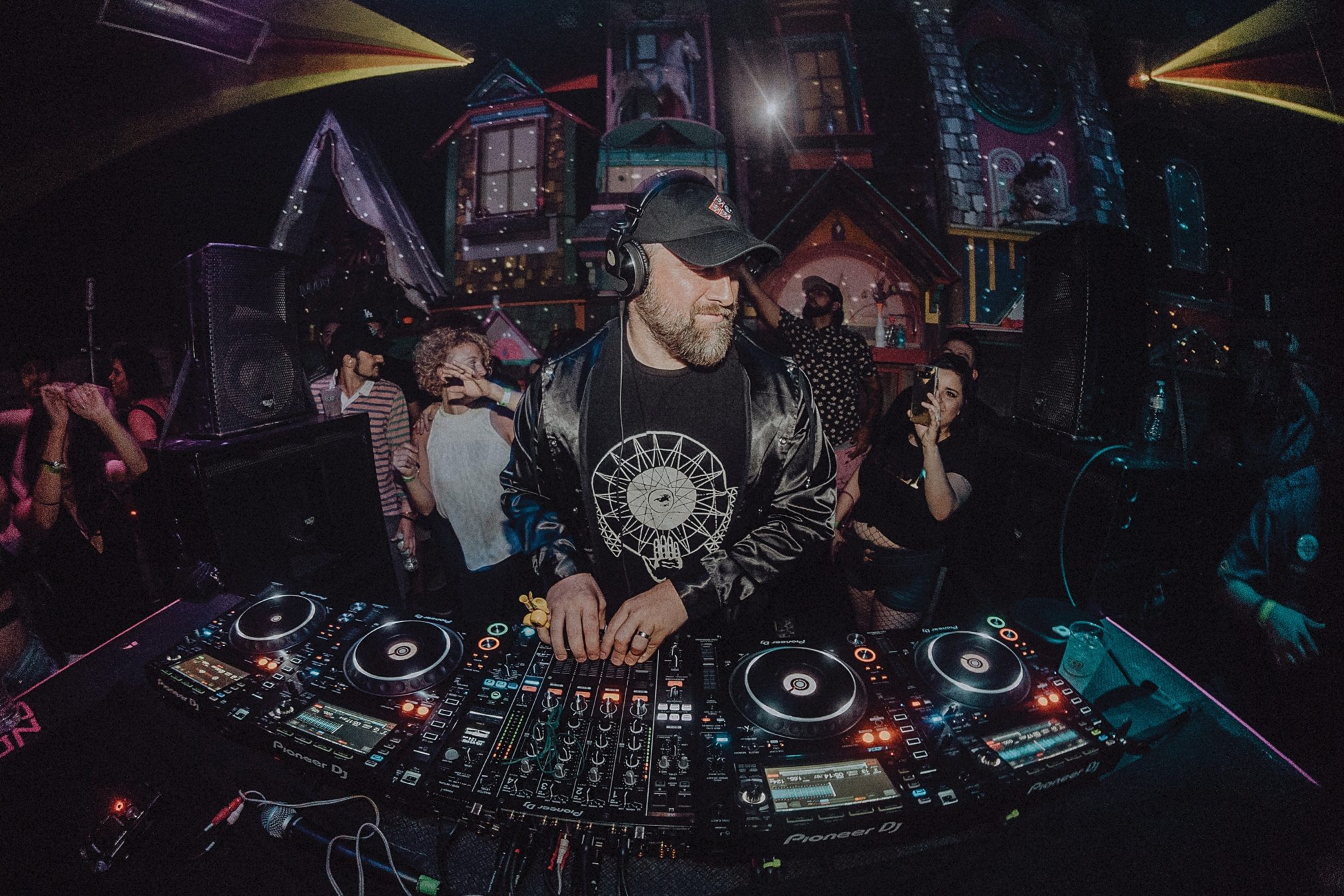
A month earlier, on September 8, Crenshaw oversaw the inaugural Birdhouse Festival, an outdoor block party named for his radio show, which drew 4,500 and sold out in just four weeks. Forty-five hundred hardly constitutes a mega-fest, and that’s deliberate. “I’d rather have three sub-10,000-person festivals, because they have a much better vibe, than have one with 30,000 people,” he says. “One 30,000-person festival would make way more money. But I don’t want to.”
He’s far from the only US promoter thinking this way. Mega festival culture hasn’t gone away entirely, of course – Electric Zoo and EDC still occur annually, and so do a number of other giants. But when venture capitalist firm SFX spent a billion dollars gobbling up EDM entities, the bubble burst almost immediately, and a lot of fests and tours fell by the wayside with breathtaking speed. “Don’t start your year-one festival and book a $5 million line-up,” says Crenshaw. “You have to build it up. You can’t just have that fanbase. You have to earn it.”
Dirtybird’s events are the tip of an exciting new intimacy, one that it’s to be hoped will sweep the US – and global – dance music scene. Crenshaw’s company has ties to a handful of other friendlier events. In the autumn he played in Croatia with Ship Fam, which espouses a similarly small-is-beautiful ethos. “I thought it was going to be the most unorganised party in history,” he says. “It was the most organised, dialled-in event ever.”
The October Campout featured an appearance from Desert Hearts, the quartet behind the Mojave-bred festival of the same name, whose event this year capped attendance at 3,500 – and which featured a CVS set last year. “We didn’t start Desert Hearts as a business venture,” co-founder Lee Reynolds recently told Billboard, adding: “We’re not hiding behind the scenes counting money, we’re on the dancefloor having fun.” One highlight is their annual ritual serving of wine and cheese on the dancefloor. Just as artisanal in a different way is San Diego’s CRSSD Festival, which convenes biannually, in spring and autumn, with a mix of high-end festival regulars (the September 29–30 edition featured Helena Hauff, Bob Moses and Nina Kraviz) traversing house, techno, and live electronics; its inaugural edition, in 2015, was highlighted by Dirtybird artist J Phlip.
CRSSD is put on by FNGRS CRSSD, the local San Diego crew who also throw parties at sushi restaurant-turned-club, Bang Bang. Despite their festival’s capacity of about 15,000, its compact location on Waterfront Park gives it an intimate feel. Even super-promoter Insomniac is putting its back into smaller events like Secret Project (see page 38). “They only went for 5,000 [people] to try to develop something,” Crenshaw notes.
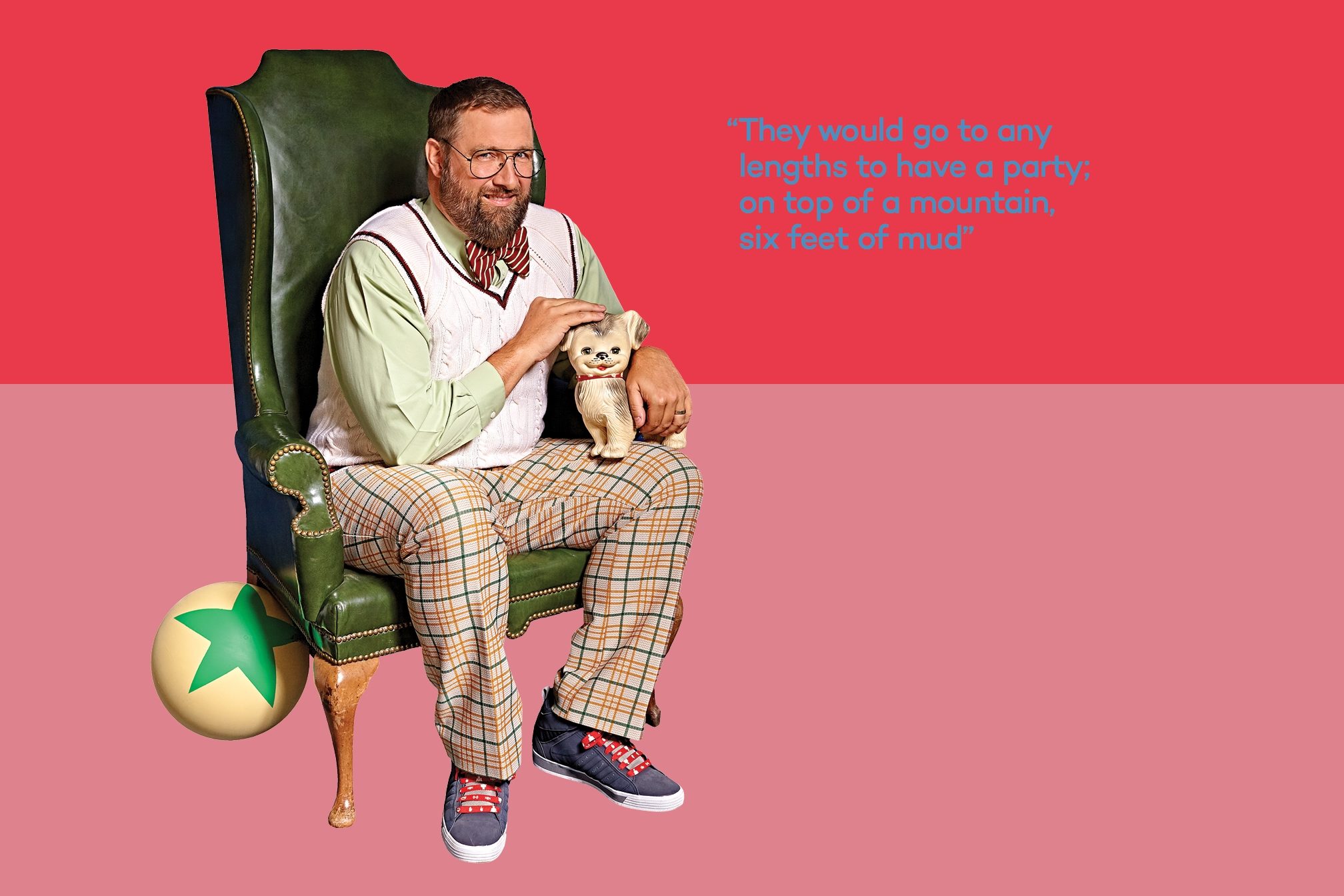
He’s highly motivated – about improving the scene itself, and his place in it. “I try to get up at five every day and just [work on] an idea,” he says. A time management coach has recently convinced him that “mass volume is the way to get to good music, instead of just needling at one idea for six weeks. Just make a hundred beats – make a beat or two beats every day, put them in a giant folder, just keep going back to the folder, and you’ll know which ones are awesome. That’s been working lately. I didn’t used to do that at all. I used to make ten tracks, and those were the ten. Now I’ll make thirty to make one.”
Nor is Claude VonStroke the only project taking up his studio time, In 2016, he issued an album under “a hip hop alias – if you can call it hip hop.” Or, for that matter, if you can call it an alias: ‘Barclay Crenshaw’ was both the artist’s name and album’s title. Tracks like ‘The Gene Sequence’, with its sparky, sparkling synth runs, play like a straighter version of icy, vintage Aphex Twin, while on ‘The Baddest’ he builds a bounding 808 groove to support rapping Inglewood, California twins Cam and China, formerly of jerkin’ rap group Pink Dollaz. “It’s future bass-slash-hip hop,” he says. “I play nineties hip hop tracks with Eprom tracks.”
For all Crenshaw’s success as a promoter, the fact that at first he wasn’t booked by his home town’s festival, Movement, nagged at him. He began going to Movement from its second instalment in 2001, when it was still called DEMF. “It took a while to convince them to book me,” he says. “I was going to fire my booking agent: ‘If you can’t get me on this fucking festival, then I have a problem’. But it was awesome.” He’s now played there 10 times. More straightforwardly techno than a typical VonStroke set, this year’s set was recorded and released as ‘Live From Detroit’. “We licensed 150 tracks, and I played 25 or something. So there was some leeway. But it wasn’t like I could fuck up any of the mixes.”
Thanks to a contact made at a Movement afterparty, Crenshaw ended up filming an interview about his life as a Detroit Pistons fan and, with his family, received a tour of the basketball stadium. Soon they were arranging for a CVS half-time DJ set. Total time: a whopping five minutes. “It’s going to be one of the weirdest sets of my entire life,” he tells us two days before. “It’s going to be a little bit out of character. It’s going to be a lot of people from the suburbs there. They’re not going to have any idea what we’re doing. It’s going to be a nightmare. But I’m going to do it.”
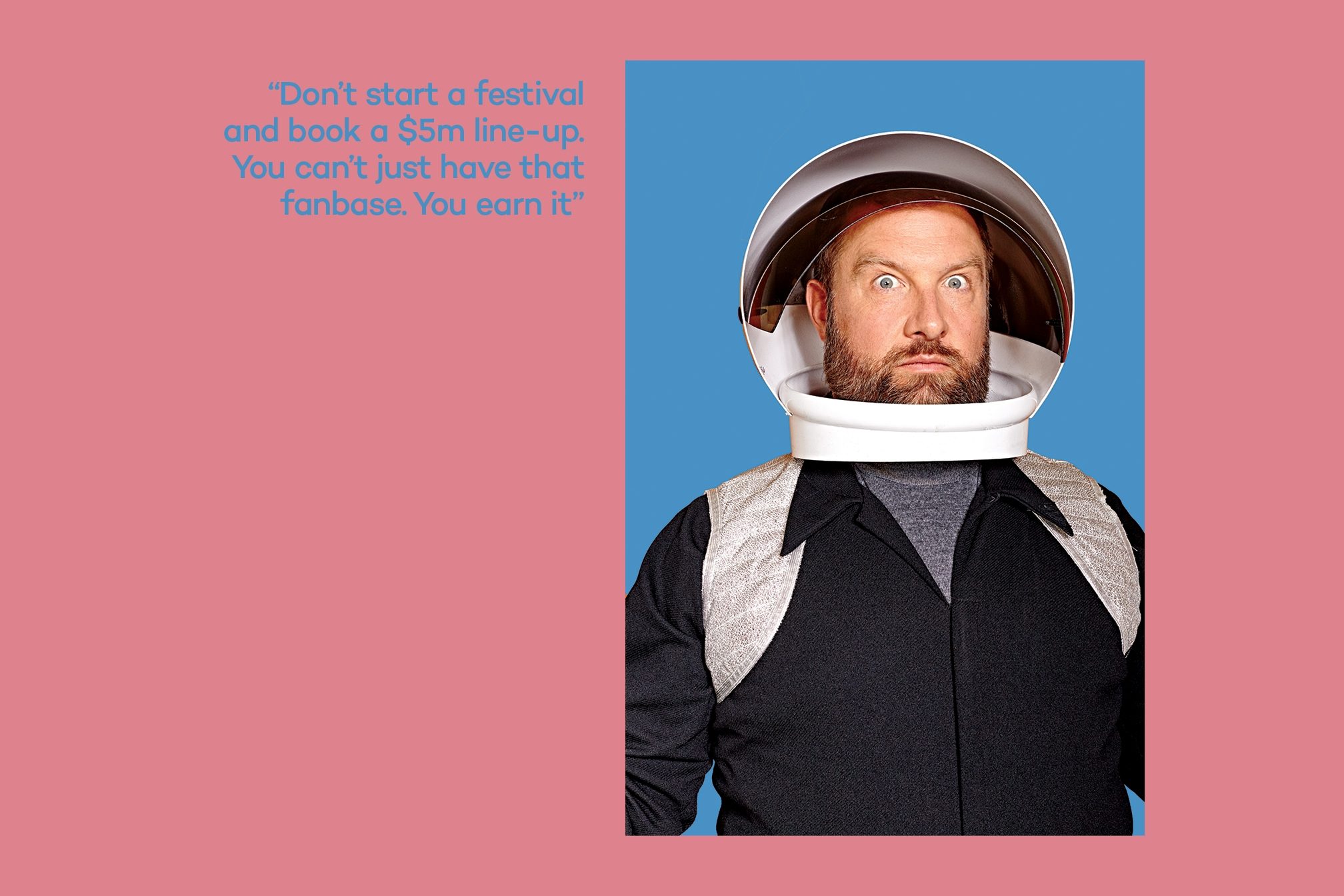
As Crenshaw and his family walk into the arena, his son Jasper says, “This is way better than school!” The tech team wheels out the DJ stand and a fluorescent light that will surround the ‘booth’ at half-court, Crenshaw, Aundy and Tia take care of various bits of admin from the arena’s courtside seats. For lunch, Crenshaw steers us to Niki’s Pizza, his old stomping ground. We order two Detroit-style pizzas, but no Chicago-style deep-dish. “This tasted really good at three in the morning,” he says.
Returning to the stadium, Crenshaw’s parents meet with the group. His mom is wearing a black T-shirt with a drawing of her son’s face; Dad’s in the one with a pastel-coloured egg with a lightning-shaped crack. “When Barclay was in college he would take ten classes and then drop whichever ones had professors he didn’t like,” he tells us.
During the game, someone spots a fan in the 16th row dressed nearly head-to-toe in Dirtybird gear – an affable kid in his mid-20s named Josh, who last caught Claude VonStroke playing at the Majestic Theater. A friend had wanted to see the game, but the evening’s guest clinched it: “I told my buddy, ‘Claude’s playing the half-time, we’ve got to go’,” he says. He’s rewarded by a visit to his seat by his idol.
The stadium’s in-house DJ introduces VonStroke with Daft Punk’s ‘Robot Rock’. As the neon light stands are put in place by the cheerleaders, a short filmed interview with Crenshaw beams from the screens above. Below them the man behind the decks nearly has a (von)Stroke – it takes half a minute for the CDJs to power up. There’s a moment of panic, but thankfully the audience doesn’t notice at all.
The set is atypical: Crenshaw chops together 10 of Dirtybird’s biggest tracks. He opens with Breach’s ‘Jack’, which prompted a bidding war between two major labels (Atlantic won). There’s the VonStroke remix of Cajmere’s (another Curtis Jones alias) ‘Percolator’, and, climactically, ‘Who’s Afraid of Detroit?’ – the fifth Dirtybird release, from 2006, and the one that made Claude VonStroke’s name. Throughout, he bounces giddily, clearly riding an adrenaline high.
Afterwards, he says, “My favourite feedback is that Jasper came up to me and said, ‘You danced around too much’. Only your son can tell you that.” Then the man who perhaps more than anyone is plotting the post-EDM future for America smiles: “I will say that my music career gets weirder and weirder every year.”
Claude VonStroke and Green Velvet tour the US as Get Real this December

